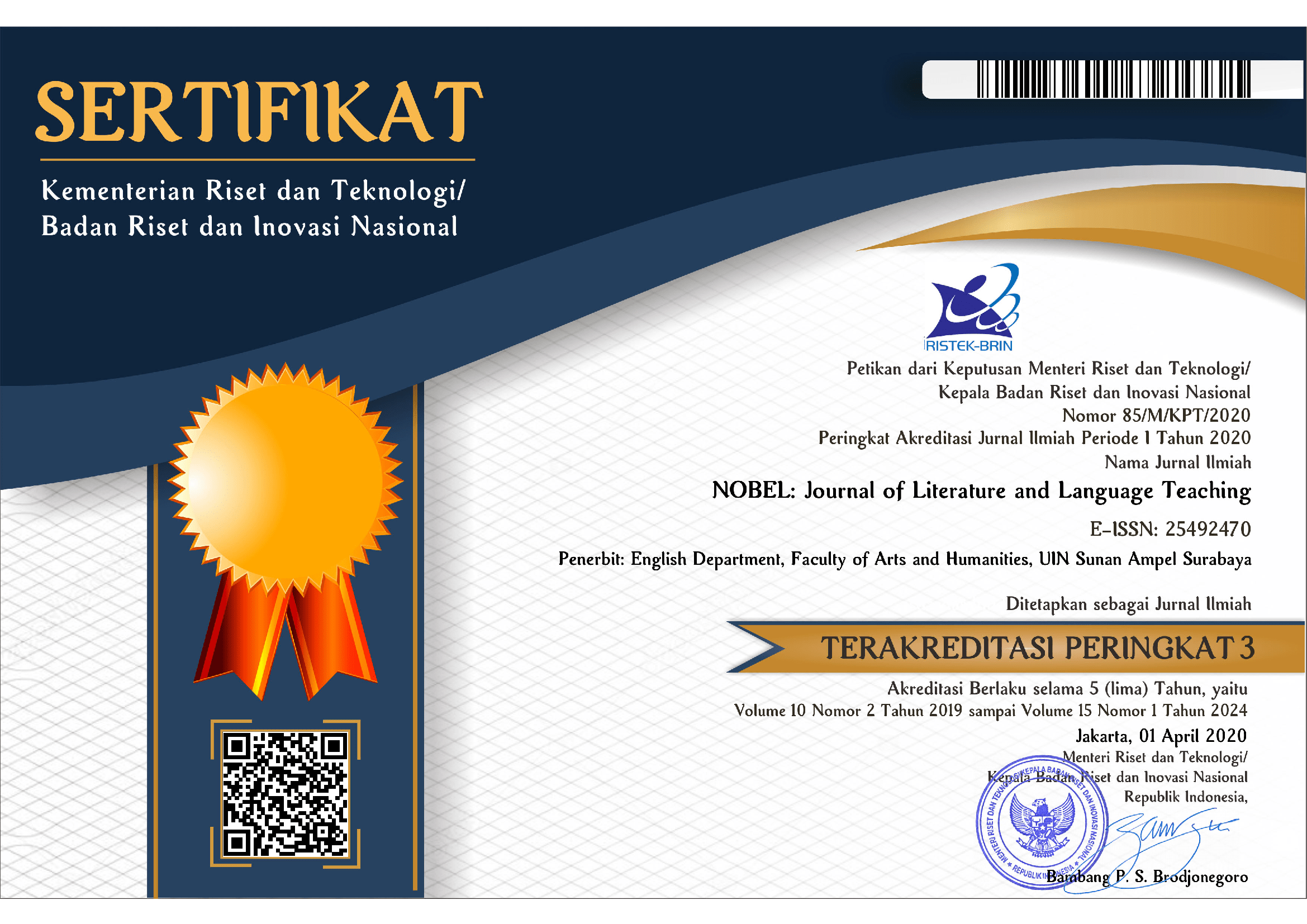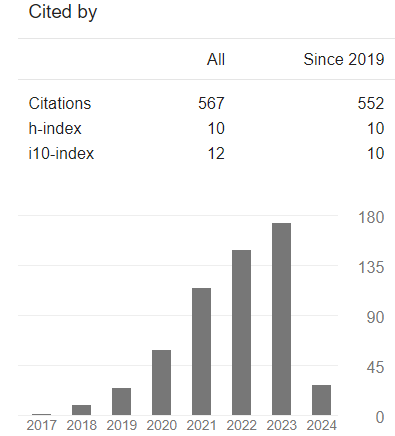Hesitaton Phenomena in COnversational Interaction Among Speaking EFL Learners
DOI:
https://doi.org/10.15642/NOBEL.2020.11.1.101-110Keywords:
hesitation phenomena, conversational interaction, EFL learnersAbstract
Hesitation is the phenomenon when people have speech disfluency in structuring sentences. English Conversation Club is one of the domains where hesitation phenomena occur among EFL learners that practicing their conversation. This study examines the hesitation phenomena and why the members are being hesitated during the interaction. Rose’s theory of taxonomy of hesitation phenomena (2012) is adopted. The approach used is the qualitative approach. Besides, the writer is also the participant observation to collect the data by recording and taking notes. This study resulted that most of the hesitation phenomena are found in the conversation conducted by the learners. The reason for being hesitant is unable to express the language and poor communication skills. Those occur spontaneously and naturally due to the reason that the processing of language in the brain is not as easy as it is produced directly.
Downloads
References
Carroll, D. W. (2007). Psychology of language, (5th ed). USA: Thomson Wadsworth.
Cowles, H. W. (2011). Psycholinguistics 101. New York: Springer Publishing Company.
Creswell, J. (2007). Qualitative inquiry and research design, (2nd ed.). UK: Sage Publications.
Duranti, A. (1997). Linguistic anthropology. Cambridge: Cambridge University Press.
Gold, R. L. 1969. Roles in sociological field observations. In G. J. McCall and J. L. Simmons (Eds.), Issues in participant observation (pp. 30–39). Addison-Wesley
Harley, T. (2001). The psychology of language, (2nd ed.). New York: Psychology Press Ltd.
Harley, T. A. (2010). Talking the talk. language, psychology and science. Hove and New York: Psychology Press. Taylor and Francais Groups.
Juan, S. (2006). Why do we say ‘um’, ‘er’, or ‘ah’ when we hesitate in speaking? Retrieved February 13, 2018 from https://www.theregister.co.uk/2006/05/06/the_odd_body_language_fillers/
Khattry, K. (2016). Why do I hesitate to start talking? Retrieved February 13, 2018 from https://www.quora.com/Why-do-I-hesitate-to-start-talking.
Kosmala, L., & Morgenstern, A. (2017). A preliminary study of hesitation phenomena in L1 and L2 productions: a multimodal approach. Proceedings of DiSS 2017. Royal Institute of Technology, Stockholm Sweden.
Pridham, F. (2001). The language of conversation. London and New York: Routledge Taylor and Francis Group.
Reitbrecht, S. & Hirschfeld, U. (2015). The impact of fluency and hesitation phenomena on the perception of non-native speakers by native listeners of German. ICPhS. Retrieved January, 10 2018 from https://www.semanticscholar.org/paper/The-impact-of-fluency-and-hesitation-phenomena-on-Reitbrecht Hirschfeld/ff904ec6c19da5e568df8c9cc5e31e2f0f9c5dbd.
Rose, R. L. (2012). A brief taxonomy of hesitation phenomena. Retrieved January, 10 2018 from http://filledpause.com/taxonomy.
Rose, R. L. (2013). Crosslinguistic corpus of hesitation phenomena: A corpus for investigating first and second language speech performance. Proceedings of the 14th Annual Conference of the International Speech Communication Association (Interspeech 2013), Lyon, France, 992–996.
Rymes, B. (2009). Classroom discourse analysis: A tool for critical reflection. Cresskill, NJ: Hampton Press.
Spradley, J. P. (1980). Participant observation. New York: Harcourt Brace Jovanovich College.
Traxler, M. J. & Gernsbacher, M. A. (2006). Handbook of psycholinguistics, (2nd ed.). USA: Academic Press.
Thornbury, S. & Slade, D. (2006). Conversation: From description to pedagogy. Cambridge: Cambridge University Press.
Warren, P. (2013). Introducing psycholinguistics. Cambridge: Cambridge University Press.







